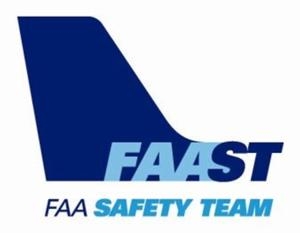Fri, Nov 11, 2016
The FAAST Safety Team Has Issued A Safety Briefing Regarding The Importance Of A Stabilized Approach
AeroSports Update has covered the stabilized approach subject a couple of times in the past, but it’s something that is so important it’s worth reviewing a recent Safety Briefing published by the FAA. While the term ‘stabilized approach’ sounds like something that’s hard to nail down for every approach, that’s simply not the case. It’s a matter of establishing certain standards for your operation and aircraft, and then sticking with them.

In the safety briefing, the FAA explains that focusing on establishing and maintaining a stabilized approach and landing is a great way to avoid experiencing a loss of control. A stabilized approach is one in which the pilot establishes and maintains a constant angle glidepath towards a predetermined point on the landing runway. It is based on the pilot’s judgment of certain visual clues, and depends on the maintenance of a constant final descent airspeed and configuration.
The FAA has also come up with a list of factors of the stabilized approach. They are:
- Maintain a specified descent rate.
- Maintain a specified airspeed.
- Complete all briefings and checklists.
- Configure aircraft for landing (gear, flaps, etc.).
- Maintain the correct altitude levels (e.g., 500 feet for VMC approach; 1,000 feet for IMC).
- Ensure only small changes in heading/pitch are necessary to maintain the correct flight path.
In the safety briefing, the FAA also addresses the need for a go around if the approach is not stabilized. The bulletin says that if the factors listed above are not met, the approach becomes “unstabilized,” which means a go-around for another attempt at landing.
If you choose to continue with an unstabilized approach, you risk landing too high, too fast, out of alignment with the runway centerline, or otherwise being unprepared for landing. These situations can result in loss of control of your aircraft.
Here’s some tips they offer for a stabilized approach:
- Pay attention to the wind in traffic pattern operations, especially on the base to final turn.
- Adjust your stabilized approach guidelines to your type of aircraft based on manufacturer’s guidance.
- Aircraft should be configured for landing at some predetermined distance from the airport or altitude, after which only small corrections to pitch, heading, and power setting should be made.
- If not stabilized, go around.
Most importantly, stabilized approach procedures and go arounds need to be practiced. This can be performed at altitude by using a predetermined altitude as a simulated airport and practicing normal traffic patterns, and approaches, and go arounds.
More News
Aero Linx: Transport Canada We are a federal institution, leading the Transport Canada portfolio and working with our partners. Transport Canada is responsible for transportation p>[...]
Gross Navigation Error (GNE) A lateral deviation from a cleared track, normally in excess of 25 Nautical Miles (NM). More stringent standards (for example, 10NM in some parts of th>[...]
From AirVenture 2017 (YouTube Edition): Flight-Proven Booster On Display At AirVenture… EAA AirVenture Oshkosh is known primarily as a celebration of experimental and amateu>[...]
Aircraft Parachute System (CAPS) Was Deployed About 293 Ft Above Ground Level, Which Was Too Low To Allow For Full Deployment Of The Parachute System Analysis: The day before the a>[...]
Also: 48th Annual Air Race Classic, Hot Air Balloon Fire, FAA v Banning 100LL, Complete Remote Pilot The news Piper PA-18 Super Cub owners have been waiting for has finally arrived>[...]
 ANN's Daily Aero-Linx (06.29.25)
ANN's Daily Aero-Linx (06.29.25) ANN's Daily Aero-Term (06.29.25): Gross Navigation Error (GNE)
ANN's Daily Aero-Term (06.29.25): Gross Navigation Error (GNE) Classic Aero-TV: Anticipating Futurespace - Blue Origin Visits Airventure 2017
Classic Aero-TV: Anticipating Futurespace - Blue Origin Visits Airventure 2017 NTSB Final Report: Cirrus SR22
NTSB Final Report: Cirrus SR22 Airborne Affordable Flyers 06.26.25: PA18 Upgrades, Delta Force, Rhinebeck
Airborne Affordable Flyers 06.26.25: PA18 Upgrades, Delta Force, Rhinebeck



